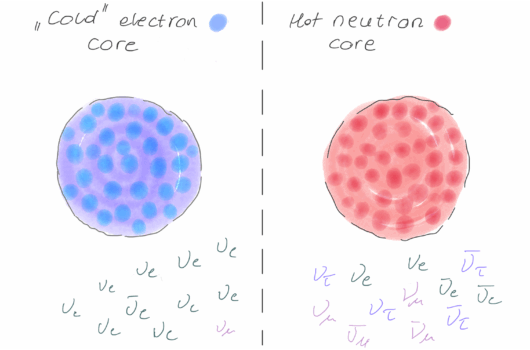Characterizing the nuclear models informed by PREX and CREX: a view from Bayesian inference
Characterizing the nuclear models informed by PREX and CREX: a view from Bayesian inference
View
Abstract
New measurements of the weak charge density distributions of ![]() Ca and
Ca and ![]() Pb challenge existing nuclear models. In the post-PREX-CREX era, it is unclear if current models can simultaneously describe weak charge distributions along with accurate measurements of binding energy and charge radii. In this letter, we explore the parameter space of relativistic and non-relativistic models to study the differences between the form factors of the electric and weak charge distributions,
Pb challenge existing nuclear models. In the post-PREX-CREX era, it is unclear if current models can simultaneously describe weak charge distributions along with accurate measurements of binding energy and charge radii. In this letter, we explore the parameter space of relativistic and non-relativistic models to study the differences between the form factors of the electric and weak charge distributions, ![]() , in
, in ![]() Ca and
Ca and ![]() Pb. We show, for the first time, the parts of the mean-field models that are the most important in determining the relative magnitude of the neutron skin in lead and calcium nuclei. We carefully disentangle the tension between the PREX/CREX constraints and the ability of the RMF and Skyrme models to accurately describe binding energies and charge radii. We find that the nuclear symmetry energy coefficient
Pb. We show, for the first time, the parts of the mean-field models that are the most important in determining the relative magnitude of the neutron skin in lead and calcium nuclei. We carefully disentangle the tension between the PREX/CREX constraints and the ability of the RMF and Skyrme models to accurately describe binding energies and charge radii. We find that the nuclear symmetry energy coefficient ![]() and the isovector spin-orbit coefficient
and the isovector spin-orbit coefficient ![]() play different roles in determining
play different roles in determining ![]() of
of ![]() Ca and
Ca and ![]() Pb. Consequently, adjusting
Pb. Consequently, adjusting ![]() or
or ![]() shifts predicted
shifts predicted ![]() values toward or away from PREX/CREX measurements. Additionally,
values toward or away from PREX/CREX measurements. Additionally, ![]() and the slope L are marginally correlated given the constraints of our Bayesian inference, allowing us to infer them separately from PREX and CREX data.
and the slope L are marginally correlated given the constraints of our Bayesian inference, allowing us to infer them separately from PREX and CREX data.





